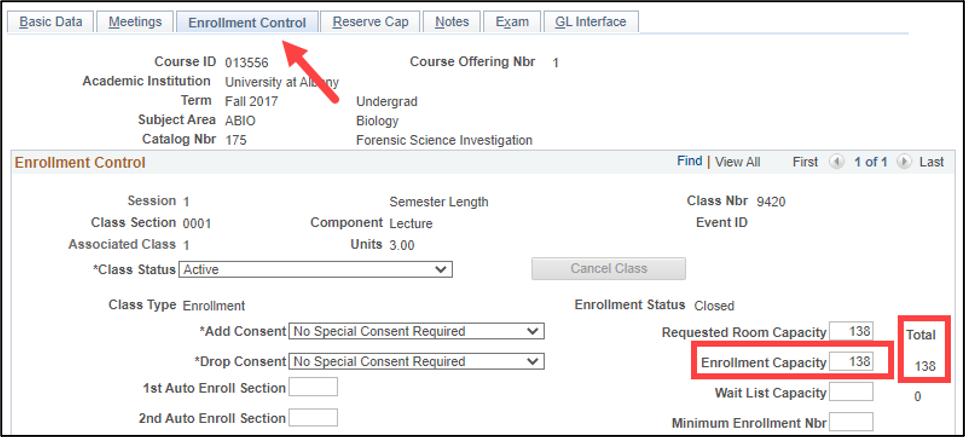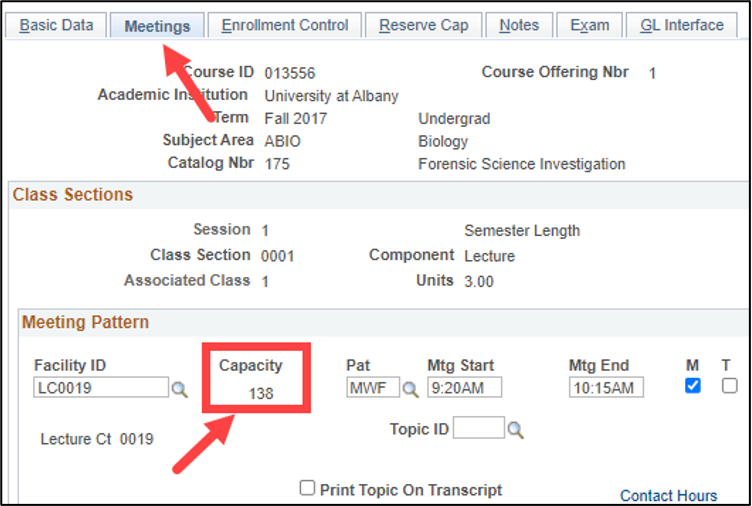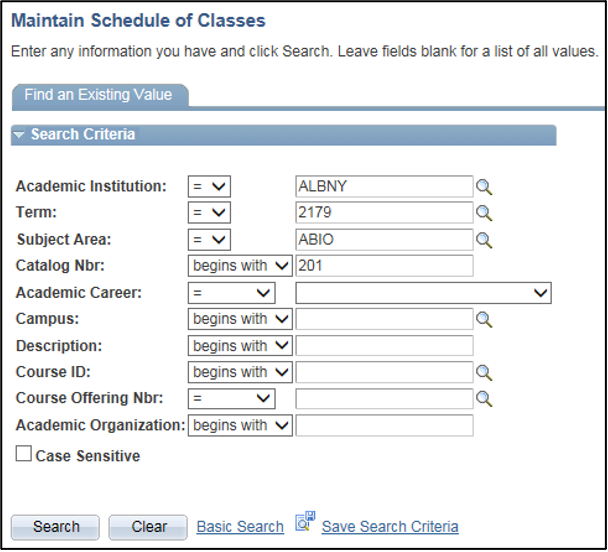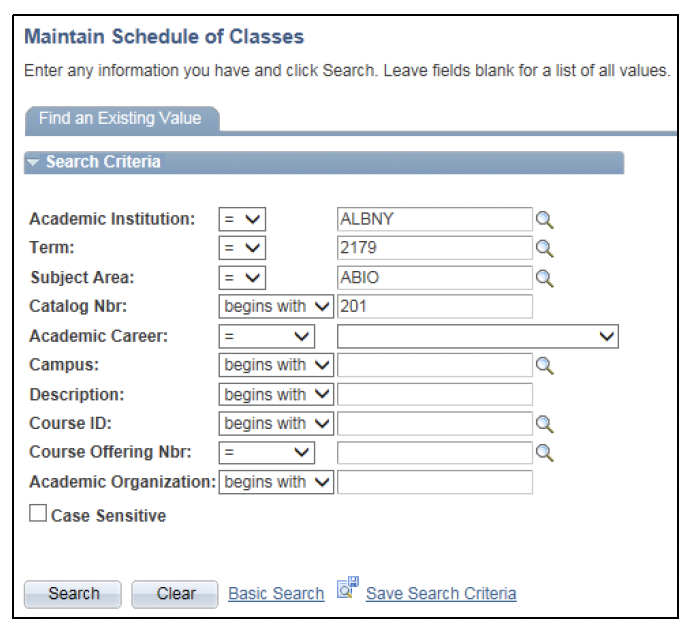Class Permissions
This information is intended for academic schedulers. Instructors should review the Permission Numbers page.
This information is intended for academic schedulers. Instructors should review the Permission Numbers page.
Academic departments can generate and issue two types of permissions:
What class permissions will and will not allow depends on the class's location:
Permissions for classes located in a physical UAlbany classroom (Facility ID) will allow an override of the enrollment capacity of the class if the number of students enrolled is lower than the assigned classroom’s capacity.
If the number of students enrolled is lower than the room capacity, permissions will also allow an override of a requirement group at the catalog level and/or section level, as well as an override of a reserved seat in a class.
Permissions will not allow additional enrollment in a class if the room capacity has already been met.
However, there are some use cases where permissions will act differently than described above. This is especially true in the following circumstances:
Lecture classes with an associated discussion or lab: Before assigning permissions in these sections, departments must be certain the number of students enrolled in all associated discussion or lab sections will not exceed the room capacity of the associated lecture section.
Combined classes (cross-listed, shared resource and same time/place): Before assigning permissions in these sections, departments must be certain the number of students enrolled in all sections that are combined will not exceed the assigned classroom’s capacity.
Permissions for classes that are arranged, fully online or held off campus will allow an override of the following:
the enrollment capacity
a requirement group at the catalog level
a requirement group at the section level
a reserved seat in a class
Here are some other important items to remember:
Log into PeopleSoft. Use the Main Menu to navigate to “Maintain Schedule of Classes." (Your pat will be "Curriculum Management,” then “Schedule of Classes” and finally “Maintain Schedule of Classes.")
Enter the Term, Subject Area, Catalog Number and select Search.
Select the Enrollment Control Tab and view the Enrollment Capacity and Total enrolled.

Log into PeopleSoft. Use the Main Menu to navigate to “Maintain Schedule of Classes." (Your pat will be "Curriculum Management,” then “Schedule of Classes” and finally “Maintain Schedule of Classes.")
Enter the Term, Subject Area, Catalog Number and select Search.
Select the Meetings Tab and view the Capacity.

Follow these instructions to generate a general permission number:

Follow these instructions to assign a Student Specific Permission:

A permission number will not appear for Student Specific Permissions. Instead, the identified students’ ID numbers and names will appear on the permission number page, which means the identified students can now enroll in the class.
The system will automatically allow the identified students to enroll in the class until either the permission expires or until the last day to add a class with permission, as indicated on the Academic Calendar. It is very important that the academic department considers setting an expiration date. Student Specific Permission cannot be removed once the status on the permission changes to "used" or "used then dropped".